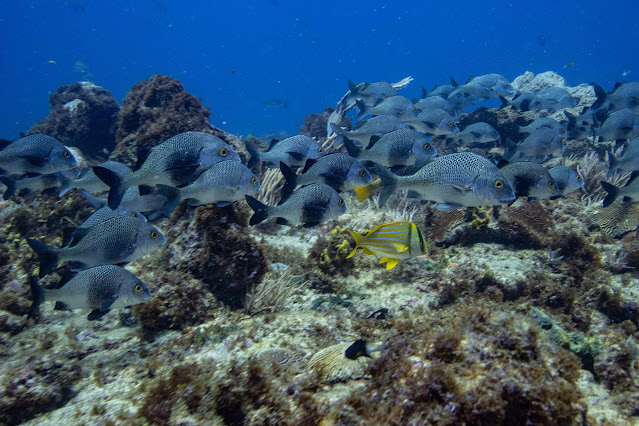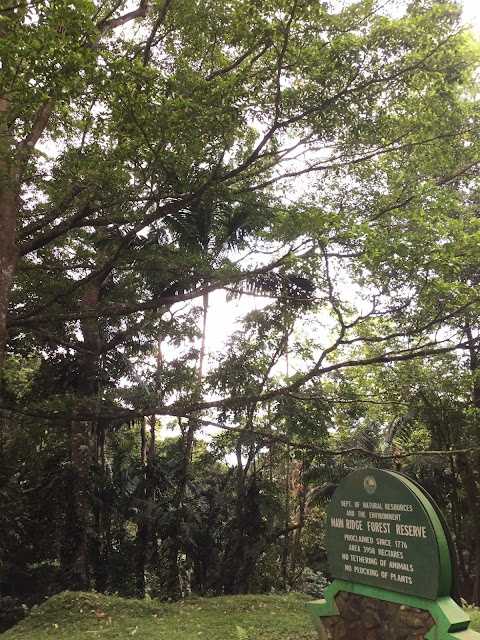Dwindling Global Biodiversity
Dr Anjani Ganase surveys what the world is losing through human activities, and makes an appeal for living within our means in the natural world.
On May 22, we observe the International Day for Biological Diversity. Biodiversity denotes the variety of living organisms that make up the natural world around us. The world as we know it is the culmination of evolution over billions of years, the result of the slowly ever-changing global environment. Organisms evolve and co-evolve with each other and the environment. The biodiversity of ecosystems is the result of balance between competition for resources and external disturbance events that create opportunities for new life. The diversity of habitats and organisms not only sustain biodiversity but is essential to our survival. Plant stocks don’t just supply the fruits and vegetables we eat today but provide the genetic stock for future supplies in a changing climate. The terrestrial and marine habitats provide the chemicals for the pharmaceutical industry and are our treasure troves against diseases. Even the ideal composition of air we breathe is the product of millions of years of ecological evolution.
Over the last 10,000 years, human civilization and advancements have resulted in significant biodiversity loss because of population growth and land converted for agriculture and homes. The rate of extinction is about 100 – 1000 times higher than the rate before the humans. Scientists are referring to this era as the Anthropocene Extinction: a large portion of biodiversity is disappearing because of human activities.
 |
| Protected forests like the Main Ridge in Tobago draw down rainfall, and are precious reserves of biodiversity. Photos by Pat Ganase |
Forests
Agriculture accounts for 80 % of the deforestation and 70 % of our freshwater use. Since 1990, about 420 million hectares have been lost; this total area is larger than India. Deforestation results in losses among the tree species (over 60,000); up to 144,000 species of fungi, 70,000 vertebrates, which include 3,700 mammals, 7500 species of birds, 5000 amphibians that live in the forest. For invertebrates, the loss can be as high as high as 1.3 million – a species of invertebrate for every citizen of Trinidad and Tobago. We cannot count the invisibles, microbes living in the soil and surfaces which contribute to functions of decomposition, pollination, habitat restructuring and plant distribution. More than 50% of the world’s forest lie in five countries, Russia owns a whopping 20 % of the world’s forest, Brazil 12 %, Canada 8.5, USA 7.6 and China 5.4%. This means that the activities and policies of any of these countries will have serious consequences for global biodiversity. While 44% of Trinidad and Tobago is forested, only 28% is considered primary forest, highest in biodiversity and untouched by human activity.
Wetlands
The world has lost about 13,600 km2 of tidal wetlands – mangroves, marshes and tidal flats. However, restorations have given back 9,600 km2 of new wetlands offsetting about 71% of this loss. Unfortunately, mangrove forests are the most vulnerable to deforestation with 50 % of the loss to agriculture, including aquaculture, as well as coastal development, construction, sea walls and dikes. The other 50% loss is indirectly from drowning due to sea-level rise and storm erosion. Even where mangroves are not removed, they become degraded and function poorly as a result. Functions such as filtering, decomposition, carbon sequestering and support as breeding and nursery grounds for many marine creatures – oysters, fish, sharks, crabs, shrimp, lobster etc - become impaired. Even the microbial community that plays major roles in regulation can be altered. The largest single wetland area is the Amazon Delta, followed by the Bay of Bengal, New Guinea and the Niger Delta. In Trinidad and Tobago, mangrove wetlands make up over 20 % of the land, home to high and unique biodiversity.

Tobago’s
coral reefs, like Flying Reef here, protect coastlines and provide nurseries
for fish and marine creatures. Photo courtesy the Maritime Ocean Collection
The Ocean
The ocean has suffered significant biodiversity loss; the most vulnerable are nearshore marine habitats such as coral reefs, seagrass meadows and rocky environments that are removed or altered directly. However, global fishing exploitation is the primary contributor to marine biodiversity loss. Today, about 34% of fisheries are overfished and 60% are at maximum capacity. One third of fish species, marine mammals and sharks, and coral reefs are threatened with extinction. Currently, ocean warming because of climate change is contributing more significantly to biodiversity loss through coral bleaching events that result in mass die off of coral species and other marine species that reside in these habitats. Areas beyond national jurisdiction are difficult to protect, and global collaboration for ocean protection continues to be a challenge. The ocean jurisdiction for Trinidad and Tobago is about 15 times the size of our combined land masses, yet there is no active conservation of the habitats nor any regulation on fishing.
The loss of biodiversity in our lifetime even in Trinidad and Tobago is apparent. Think back to childhood, and the wildlife events that no longer exist today: seasonal bugs hitting the windshields of cars, the waves of manicou crabs coming from the Northern Range forest at the start of the rainy season, or the sea crabs scrambling along the rocks, the seasonal blooms of cannonball jellyfish, chip-chip and sand dollars on east coast beaches. Humans advance to depend on technology while laying waste to the natural world.
The human world now outpaces the natural ecology and outstrips the ability of organisms to sustain and recover. Unless we can abate our relentless need for mass consumption at rapid and unsustainable rates, climate change will be the first of many significant problems we must face because of over exploitation of resources and the immense waste generated. We must learn to be part of the ecological cycle, so that we do not undermine the systems we depend on for survival. Let us learn how we fit into this natural world, how we can conserve biodiversity; let’s start from young.
References
Díaz, Sandra Myrna, et al. "The global assessment report on biodiversity and ecosystem services: Summary for policy makers." (2019).
FAO and UNEP. 2020. The State of the World’s Forests 2020. Forests, biodiversity and people. Rome. https://doi.org/10.4060/ca8642en
Juman, Rahanna A., and Deanesh Ramsewak. "Land cover changes in the Caroni Swamp Ramsar Site, Trinidad (1942 and 2007): implications for management." Journal of Coastal Conservation 17.1 (2013): 133-141.
Murray et.al. (2022) High-resolution mapping of losses and gains of Earth’s tidal wetlands, Science, https://dx.doi.org/10.1126/science.abm9583



